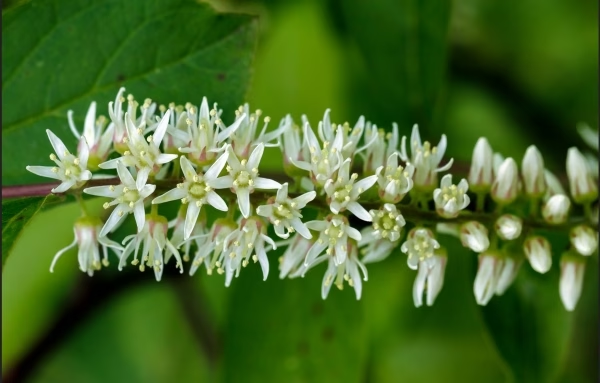
Virginia Sweetspire
Botanical Name
:
Itea virginica
Plant Type
:
Deciduous shrub
Seasons
:
Plant in spring (after last frost), blooms from late spring to mid-summer
Sun Level
:
Full sun to partial shade
Ideal Soil Temperature for Planting
:
60–70°F (15–21°C)
Soil Type
:
Moist, well-drained, humusy soil
Hardiness Zones
:
5–9 (USDA)
Germination
:
14–21 days
P.H. Level
:
5.0–6.5 (acidic)
Water/Irrigation
:
Regular watering, especially during the first year
Fertilization
:
Light application of balanced fertilizer (e.g., 10-10-10) in spring
Habit
:
Upright, arching branches
Propagation
:
Seeds, division
Final Plant Height
:
4–8 ft
Spread
:
4–8 ft
Flowers
:
Small, fragrant, white flowers in terminal racemes
Attracts
:
Bees, butterflies, and other pollinators
Uses
:
Ornamental, erosion control, rain gardens, and foundation plants
Companions
:
Coneflowers (Echinacea), ferns, ornamental grasses
Pruning
:
Prune after flowering
Toxicity
:
Generally considered non-toxic to humans and animals
Pests
:
Rarely affected by pests but sometimes flea beetles can be a issue
Diseases
:
Chlorosis (when the soil pH creeps above 7.0) and leaft spot
Fun Fact
:
he genus name “Itea” is derived from the Greek word for “willow,” referring to the plant’s willow-like leaves and flower clusters
Botanical Name
:
Itea virginica
Plant Type
:
Deciduous shrub
Seasons
:
Plant in spring (after last frost), blooms from late spring to mid-summer
Sun Level
:
Full sun to partial shade
Ideal Soil Temperature for Planting
:
60–70°F (15–21°C)
Soil Type
:
Moist, well-drained, humusy soil
Hardiness Zones
:
5–9 (USDA)
Germination
:
14–21 days
P.H. Level
:
5.0–6.5 (acidic)
Water/Irrigation
:
Regular watering, especially during the first year
Fertilization
:
Light application of balanced fertilizer (e.g., 10-10-10) in spring
Habit
:
Upright, arching branches
Propagation
:
Seeds, division
Final Plant Height
:
4–8 ft
Spread
:
4–8 ft
Flowers
:
Small, fragrant, white flowers in terminal racemes
Attracts
:
Bees, butterflies, and other pollinators
Uses
:
Ornamental, erosion control, rain gardens, and foundation plants
Companions
:
Coneflowers (Echinacea), ferns, ornamental grasses
Pruning
:
Prune after flowering
Toxicity
:
Generally considered non-toxic to humans and animals
Pests
:
Rarely affected by pests but sometimes flea beetles can be a issue
Diseases
:
Chlorosis (when the soil pH creeps above 7.0) and leaft spot
Fun Fact
:
he genus name “Itea” is derived from the Greek word for “willow,” referring to the plant’s willow-like leaves and flower clusters
Written by Nondiah Khalayi – https://www.linkedin.com/in/nondiah-khalayi/

